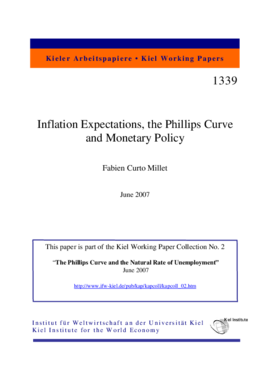Autoren
Erscheinungsdatum
JEL Classification
Schlagworte
Conjectures about inflation expectations are inextricably linked to our understanding of the relationship between the real and monetary sides of the economy; yet, direct empirical research on the matter has been scarce at best. This paper therefore examines the empirical properties of inflation expectations data constructed on the basis of both qualitative and quantitative surveys of consumers for a set of eight European countries. The rational perceptions hypothesis is tested and rejected by the data, a finding which in turn leads us to reject the rational expectations hypothesis and casts doubt on the New Keynesian Phillips Curve model. The popular alternative of using “rule-of-thumb” expectations in such models empirically is also found to be unrobust. Similarly, the conjecture by Akerlof et al. (2000) of a non-vertical long-run Phillips curve arising from the presence of “near-rational” expectations cannot be supported. The Mankiw and Reis (2002) Phillips curve based on the idea of “sticky information” succeeds in its intuition of a gradual adjustment of expectations, but its assumption of rational updating is challenged by the data in the context of the natural experiment provided by the UK's ERM disinflation. Instead, the adjustment mechanism for expectations appears to display largely adaptive characteristics. Finally, the paper provides some insight


